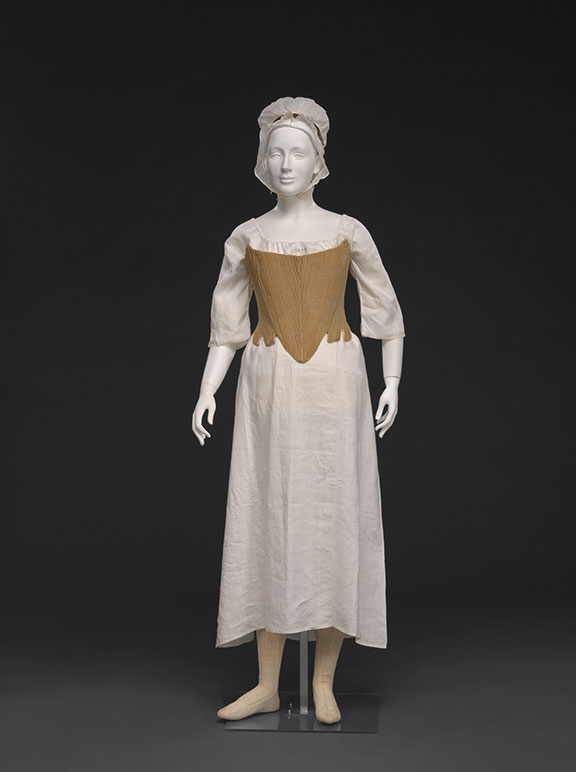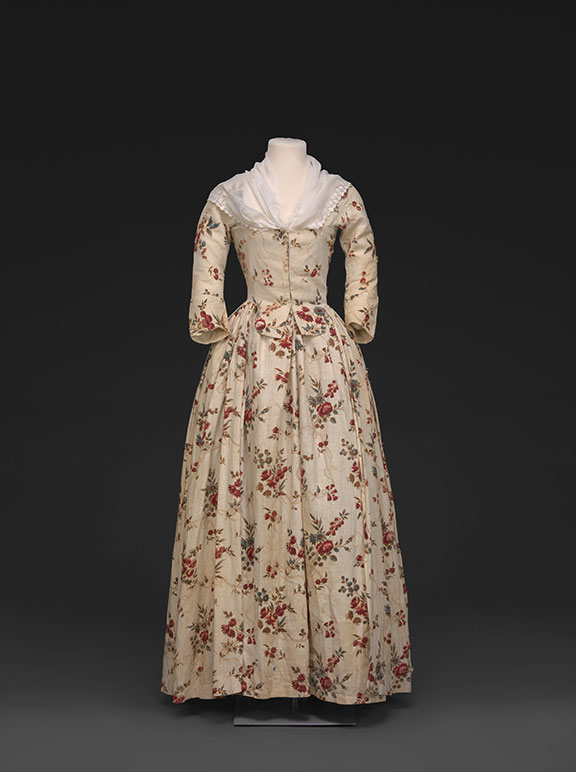Undergarments
Late 1780s
Style: The shift (rebranded in the 1800s with the more genteel French term “chemise”) was worn next to the skin, protecting the outer garments by absorbing body oils and sweat. Shifts also prevented chafing from the stays, which were worn in some form by all classes of women. Shifts could be made from finer or lesser quality linen, or sometimes tow (fabric made from the coarser fibers of the flax plant).
The shift’s shape changed somewhat towards the end of the 1700s, with shorter, narrow sleeves replacing earlier elbow-length gathered ones. This one is transitional, with narrow sleeves not yet as short as they became around 1800.
The boning in the stay was not actual whalebone but rather strips of baleen, the comb-like filtering system in the mouth of some whales; boning was also often made of wood or caning. Beginning about 1780, staymakers learned new strategies for creating the corset’s shape, with fewer bones used more strategically, including horizontally and diagonally.
Linen shift, late 18th century, made in the United States, 46.104, gift of Daniel H. Gladding ; corset, linen with wood boning and leather binding, possibly worn by Ruth Stephens Adams in Connecticut or Massachusetts, 2505, gift of Teresa Van Anda Bruchholz.





